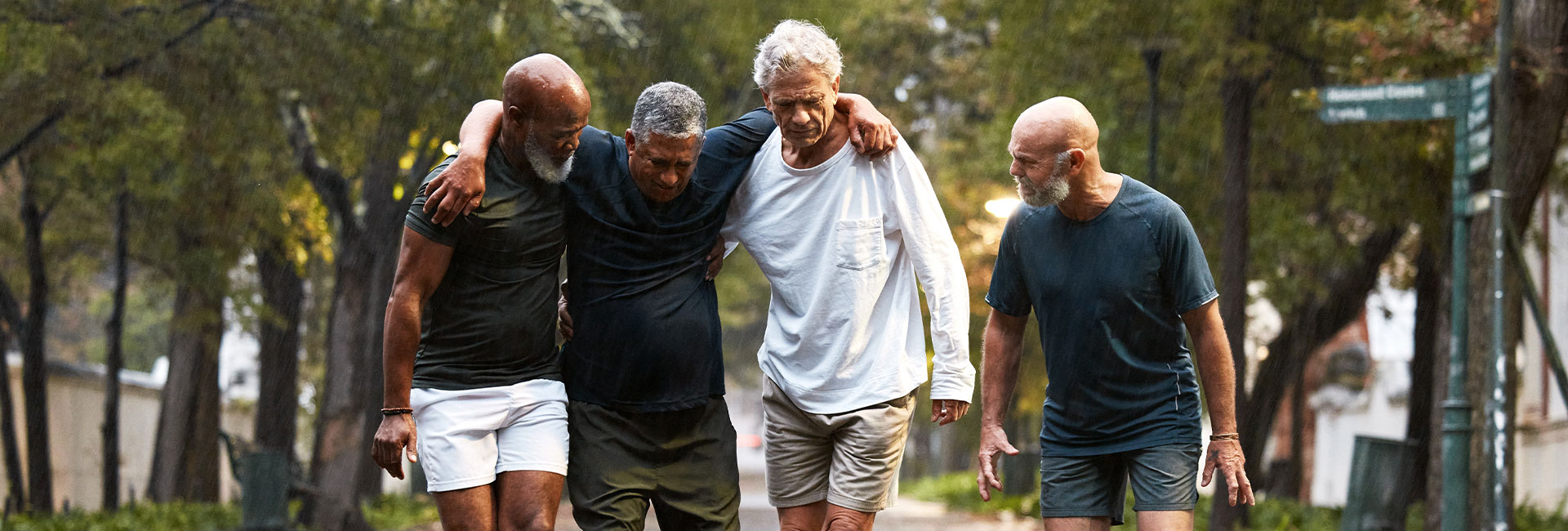Every day across the U.S. all sorts of people face the debilitating pain of an ankle sprain. Sprained ankles are one of the most common injuries of the musculoskeletal system and tend to become even more prevalent during wet and often icy winter conditions. Snow can camouflage obstacles on hiking trails, increasing the odds of a misstep that causes an ankle injury. Driveways and sidewalks can be slippery, leading to falls that result in ankle sprains.
Additionally, the start of a new youth sports season, or transition from fall to winter sports, can also be the factor that leads to a greater ankle sprain rate among kids.
Unfortunately, there are no magic exercises to prevent an ankle sprain. But there are helpful tools you can use to reduce your risk of ankle sprains and re-sprains – which are significantly higher within the first two years after an initial sprain.
Maintaining good flexibility and ankle mobility is critical for ankle health. We see too many individuals who sit most of their day and ignore their ankles which can lead to reduced ankle and calf flexibility. This not only increases the risk of ankle sprains but also other common injuries such as Achilles tendinitis and plantar fasciitis. Good ankle mobility also impacts our knees, hips and low backs. When the ankle moves adequately, it allows regional joints above it to work as optimally as they can.
Strong ankles are also important for withstanding the occasional misstep that ideally does not cause a sprain. Balance training is ideal for strengthening our ankles, especially when we stand on something soft that forces our ankles to work harder than they do when we stand on solid, level ground. Strong hips are also important because our glute and hip muscles control a lot of what happens below them. When the hips are weak it can lead to increased movement and lack of control at the knee, ankle and foot. And don’t forget the core!
By taking care of these various body parts and making sure we have good strength and flexibility all the way down to our ankles, we can reduce the risk of ankle sprains and re-sprains.
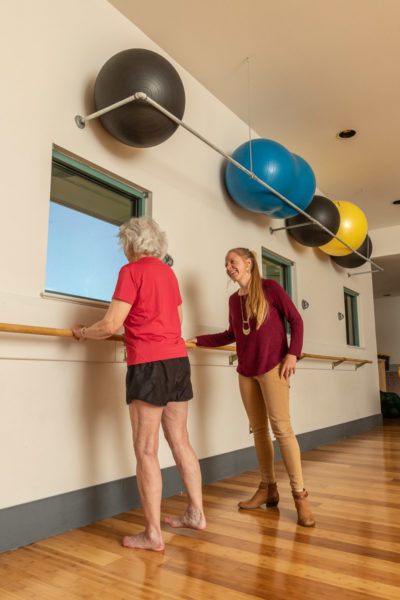
Top exercises for strong ankles
The following exercises can help get you back to your activities after an ankle sprain and will also boost your ability to avoid a re-sprain. And, if you haven’t sprained your ankle, adding these moves to your exercise routine at least three times per week is a great way to keep it that way!
Early-stage rehabilitation exercises:
- Ankle Pumps: point your toes as far away from you as you can like you are pushing down on the gas pedal, then pull your toes up toward you as far as you can.
- Ankle Circles: create as big of a circle with your toes as you can going in a clockwise direction for ten rounds, then reverse direction and repeat another ten times going counterclockwise.
- Ankle Alphabet: With your toes draw your ABC's and try to focus on smooth and coordinated motion.
- 4-way ankle w/ resistance band: Using a resistance band, push against the band pointing your toes away from you. Similarly, using the resistance band push your toes to the inside against the band and then push the toes to the outside against the band. Lastly, pull your toes towards you against the resistance band. Repeat each 15 times.
- Calf stretches: Lean against the wall with one foot back and one foot forward. Make sure your heels stay in contact with the ground and that your leg doesn't rotate in or out so your toes should be pointed forward when you look at your back foot. Lean forward until you feel a good stretch in your calf of the back leg. Hold for 30 seconds.
- Calf raises (assuming weight bearing is well tolerated): Holding onto the wall or a counter for support, raise up on your toes as high as you can and then slowly return your heels to the floor. You should feel your calf muscles engage. Repeat 10-20 times.
Mid-stage rehabilitation exercises:
- Single leg balance: stand on one leg and try to hold this position for 30 seconds without putting the other foot down.
- Tandem balance: place one foot in front of the other so that your heel and toes are touching and hold this position for 30 seconds.
- Squats: stand with feet shoulder width apart, push hips backwards while bending knees and lower down until thighs are parallel to the ground. Squeeze glutes and return to standing. Can add challenge by placing resistance band around knees or adding weight.
- Step up/downs: Standing in front of a step, place affected foot onto step, lean forward, and stand up onto step. Can add challenge by adding a march to the end of the movement or adding weight. Lateral step downs can be performed standing sideways on a step, then hinge and lower foot slowly to the floor, gently tap, and then return to standing tall.
- Forward and lateral lunges: Performed standing and taking a big step forward, lower back knee to the floor, both knees should be bent to about 90 degrees, keeping chest upright, then push up and return to standing. Can be performed laterally as well.
- Band walks: Also called crabwalks and monster walks. Place a resistance band around your ankles, stand in a mini squat position, keep your feet as wide as your shoulders and side-step keeping tension in the resistance band. Can also perform walking forwards and backwards with band around ankles.
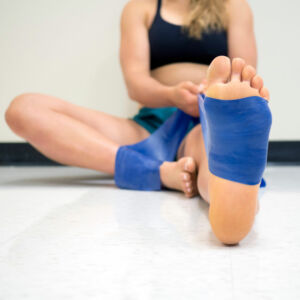
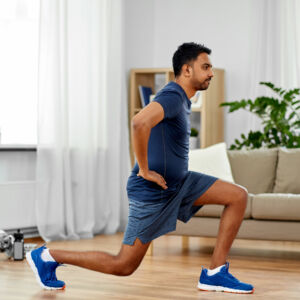
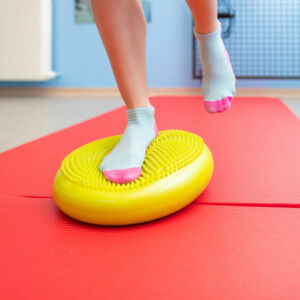
Late-stage rehabilitation exercises:
- BOSU and unstable balance training: BOSU balls and other foam pads that reduce our stability are great training aides to use in the later stages of rehabilitation. These increase the challenge to our feet and ankle muscles, as well as the rest of our bodies, and improve our proprioception and neuromuscular re-education.
- Agility and plyometric exercises: If appropriate, your physical therapist will guide you through exercises that include agility and jumping tasks to retrain your ankle to perform these actions.
- Return-to-run training: A return to run protocol is often used with athletes and runners. This protocol guides you through different phases to increase load, distance, and speed in a scientific way that allows time for your tissues to adapt without causing excessive inflammation or tissue damage.
- Sport-specific training: If return to sport is one of your goals your PT will help reintroduce sport specific movements and challenges to prepare you for returning to the court or field.
These are general exercises, and this list is obviously not a complete or comprehensive list of ankle exercises. However, they will hopefully work as good guidelines and starting points if you have injured your ankle and want to rehabilitate while also working to ensure you don’t re-sprain it in the future.
In most cases this is an appropriate progression for individuals who have sprained their ankle but could apply to other ankle injuries or dysfunction as well.
If you think you sprained your ankle, check out our blog Sprained Ankle? What You Need to Know. for education and tips on ankle sprains. And of course, if you need treatment for your ankles come visit us at one of our local Therapeutic Associates Physical Therapy clinics.

Start your physical therapy journey today.
As physical therapists, we know the importance of movement for overall health and well-being. From injury recovery to achieving optimal performance, our passion is to help every patient reach their goals and live an active, pain-free life. Get started with PT today!
